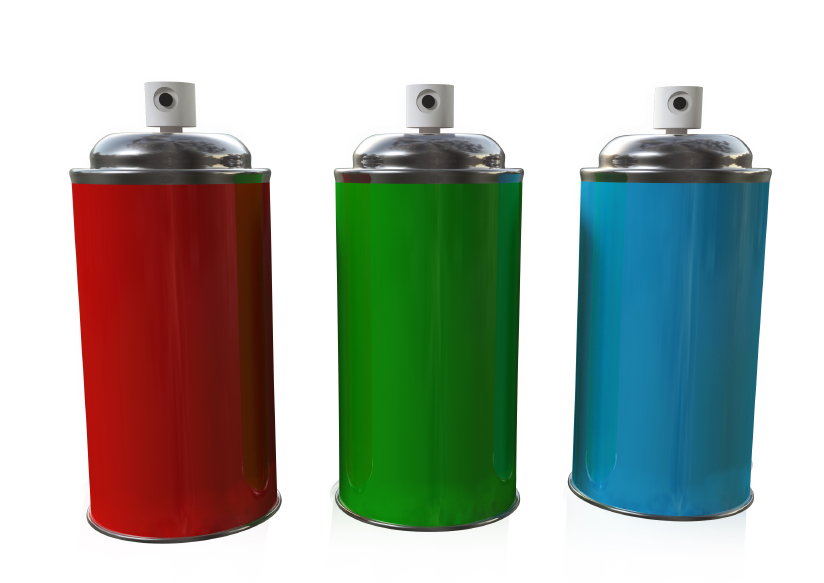The Greenest Way to Use Aerosol Spray Paint
 Aerosol cans have been around for nearly a century; they were first used for non-painting applications, such as applying pesticides. In 1949, Edward Seymour invented canned spray paint and a new industry was born. Over the years, some changes have reduced the side effects of aerosol use, but it still has a long way to go to become "green."
Aerosol cans have been around for nearly a century; they were first used for non-painting applications, such as applying pesticides. In 1949, Edward Seymour invented canned spray paint and a new industry was born. Over the years, some changes have reduced the side effects of aerosol use, but it still has a long way to go to become "green."
The original propellants used in aerosol spray paints, chlorofluorocarbon gases (CFCs), were banned from use in the US in 1978 after the discovery that they depleted the ozone layer. subsequently, hydrocarbon propellants were common until the 1980s, when science found they contributed to smog by reacting with nitrous compounds in the air. Today 1, 1, 1, 2,-tetrafluoroethane is the main propellant. It's a mouthful just to say, and not very green by any stretch of the imagination.
Handy to Use
Aerosol spray paint is very convenient to use: You pop the top, give it a few shakes and you're on your way. The finish dries quickly, leaving no brush marks, and there are no brushes or other equipment to clean afterward. What you do have, however, is an empty metal can, which usually cannot be recycled and is often considered hazardous waste.
New Latex Formulations
Although the standard for aerosol spray paint is solvent or oil-based (read: toxic!), now we can choose from a handful of manufacturers that produce latex and water-based aerosol spray paints. The latter have lower VOCs (volatile organic compounds) than their cousins. According to the Krylon spray paint company, its H2O aerosol spray paint releases 55 percent less smog-generating chemicals than the average solvent-based spray paint, and VOC emissions are reduced by 25 to 30 percent. However, even "good" spray paints still produce emissions that are hazardous and which most people find unpleasant.
Think Outside the Spray Can
Obviously, the greenest option would be avoiding aerosol spray paint altogether. If necessary, however, choose a water-based product -- or use a solvent-based one sparingly. Best practice is to spray paint outdoors or in a well-ventilated area. To protect the user, a respirator rated for this type of product is recommended. Unfortunately, a giant respirator is not handy for Mother Earth, and a dedicated air-handling room or facility is not an option for the home user. An air sprayer or HVLP type of painter with a low or no-VOC paint, which uses air -- rather than chemicals -- to move the paint through the spray nozzle, is a better option.
That can of aerosol spray paint on the shelf at your local hardware store may change the color of some deck chairs in no time, but think about ways to use other painting techniques first. You can often avoid the environmental impacts of aerosol spray paint with a simple brush and can. I'm sure you and Mother Earth can live with a few brush marks if your technique is a little off.
Consult a professional painter for more green painting practices.
Updated January 28, 2018.
Looking for a Pro? Call us (866) 441-6648

Painting Average Costs
Painters Experiences

Interior Painting And Repairs Restore The Home I Bought At Auction

Fast Professional Tree Service For My Crabapple And Persimmon



